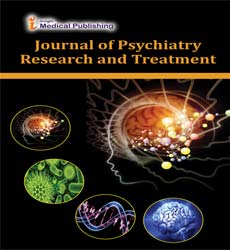Pathogenesis and Treatment for Central Neurocytoma
Abstract
Primary Neurocytoma is a rare intraventricular tumor of significant anxiety that affects 0.25-0.5% of brain tumors. Due to the small size of the largest clinical series, the analysis and treatment of these tumors is controversial. Patients with severe Neurocytoma usually get a positive diagnosis, but in some cases the scientific pathway is particularly aggressive.
Proliferation markers with mib1 are probably more beneficial in predicting recurrence, even if the histological function of anaplasia does not suggest biological behavior. The most important modality of healing is surgery, and safe maximal resection provides comfortable long-term results.
Significant Neurocytoma (CN) is an exceptional ventricular tumor. Ultimately, CN has become a definitive medical and pathological entity based on information that describes its scientific, radioactive, and histopathological properties.
Of the patients suffering from CN, 70.0% are elderly between the ages of 20 and 40, and the outbreak currently does not indicate sexual overweight. About 25.0% of tumors are "abnormal CNS". They are particularly competitive, with a 67 index of over 2.03.0% and excellent levels of infiltration margin, mitotic entertainment, nuclear atypia, necrosis and vascular proliferation.Surgical treatment is currently the mainstay of CN treatment. Some researchers recall that the diversity of tumor resection is the most important prognostic factor, and complete resection of CN should allow better management of surrounding tumor recurrence. However, the correlation between total tumor resection and mean survival (or) is controversial.
In addition, adjuvant radiation therapy does not improve the Karnofsky Performance Reputation Ranking (kps) of affected patients after complete resection of the tumor, and it is arguable whether it is essential after complete resection of cn. Therefore, the implementation of radiation therapy to treat cn requires a complete evaluation. Considering the lack of readability of CN treatment, examine the survival rate, complications, and long-term target reputation of CN patients after treatment and whether adjuvant radiation therapy is needed after complete resection. We determined whether incomplete resection and adjuvant radiation therapy would be totally renewed.
Resection in light of the difficulties and disabilities that the patient experiences after total resection of the tumor and the need for additional treatment after total resection of the atypical CNS.
Pathological Report and Immunohistochemistry In 467 patients, 3 pathologists were diagnosed with Global Health Employer (who) grade 2 CN. The average price of ki67 was 5.0%, ranging from 1.0% to 20.0%. There were 10 cases of necrosis, 7 cases of mitosis hobby (more than 3 mitosis/10 cases of high-power field), 2 cases of vascular proliferation, and 1 case of nuclear atypia. Fifty-five patients with strange CN were identified.
All patients underwent surgery. The Trans frontal groove approach was used in 62 patients (62/67, 92.5%) and the transcallosal approach was used in all cases in 5 patients. Volumes measured prior to radiation surgery ranged from 600 cm3 to 5900 mm3. During the follow-up period, the tumor volume in the lateral ventricle decreased, ranging from 250 mm3 to 3100 mm3. In one patient, the 0.33 ventricular tumor nodules had almost disappeared after 2 years. Calculations of the rate of change in tumor volume resulted in lower ones.
In creeping tumor tissue with infrequent mitosis, the effect of radiosurgery on frequent vascular injury of tumor vessels is generally presumed, as in the case of severe neurocellular tumors. Other effects appear to be direct damage to the tumor tissue itself, as shown by histological examination. Central Neurocytoma shows correct ngiogenesis. Therefore, they exhibit strong contrast enhancement. This angiogenesis appears to be responsible for the high quality response of central Neurocytoma to gkrs. The advantage of focused radiation is that overdose with a sharp drop in radiation can be accurately provided in a single drug consultation. Similarly, recurrent and valuable Neurocytoma tend to be surrounded by cerebrospinal fluid because they are usually characterized by an intraventricular boom, and most easily, a small portion of the tumor comes into contact with brain tissue. This makes them ideal targets for gkr, as overdose can reach maximum CSF and minimize radiation exposure to adjacent brain tissue. In this way, the side effects of radiosurgery are minimized.
Open Access Journals
- Aquaculture & Veterinary Science
- Chemistry & Chemical Sciences
- Clinical Sciences
- Engineering
- General Science
- Genetics & Molecular Biology
- Health Care & Nursing
- Immunology & Microbiology
- Materials Science
- Mathematics & Physics
- Medical Sciences
- Neurology & Psychiatry
- Oncology & Cancer Science
- Pharmaceutical Sciences
